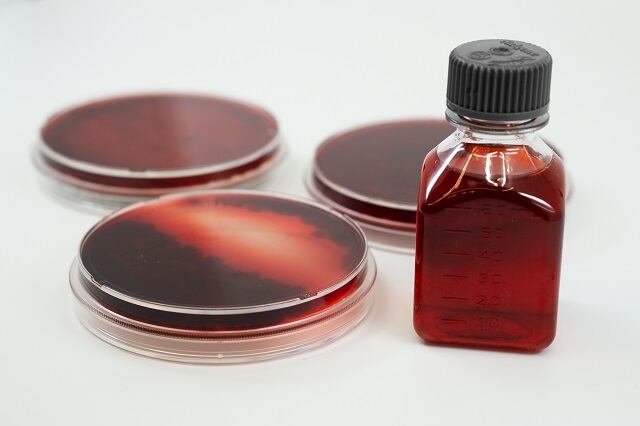Founded in Rosario in Argentina's Santa Fe province last year, the start-up Michroma recently relocated to Silicon Valley after being selected to take part in IndioBio, an accelerator program for biotech start-ups.
The company takes filamentous fungi, which it describes as the “best dye producers in nature”, and CRISPR engineers them to create proprietary, non-GMO industrial strains that secrete color in highly improved yields.
Michroma initially set itself the objective of developing a functionally equivalent alternative to the insect-derived red cochineal that is also vegetarian and halal-friendly. It is currently producing red, orange and yellow and says it will be able to produce blue, green, black and violet in the near future.
Traceable, sustainable and functional
Michroma’s final product is not the fungi themselves but a "novel compound" produced by the fungi that is naturally colorful.
In bioreactors, the fungi secrete these colors to the media where they are growing – a liquid made of water and food – and Michroma then concentrates or dries it.
According to Michroma, the fact the dyes are grown in a closed and controlled environment allows for 100% traceability and are more sustainable than fruit or vegetable-extracted colors, which can have high carbon, water, and land-use footprints. They also offer functional advantages over natural dyes, such as greater pH- and thermostability, and more vibrant color, it says.
“Right now, we are focusing on comparing our product with natural options because our ambition is to replace insect dyes and beet juice. But we are working on improving the yield to be on a par with petroleum-based dyes in the future," said Ricky Cassini, the company's co-founder and CEO.
On the market ‘within two years’
Michroma has already raised US$450,000 in a pre-seed round and opened its seed round this week, aiming to raise US$3 million. These funds will be used to continue developing the technology, complete safety testing of the novel compound and scale up production.
It expects this will take around one and a half to two years, after which companies from the food and pharmaceutical industries will be able to buy the pigments, although cosmetic and textile manufacturers may have to wait for less.
Despite the wait, manufacturers have already expressed interest in Michroma’s dyes and to-date it has received five letters of intent from large multinationals from the confectionery, beverage, food, cosmetics and pharma sectors.
The company is focusing on bringing its products to market in the US before other regions but getting regulatory from the US’ Food and Drug Administration (FDA) will open doors in Latin America from a regulatory stance too, Cassini added.
R&D operations will be based in Argentina
Additionally, although production will be based close to its customers, most likely in Mexico or the US, the company plans to keep a physical presence in Latin America.
“We are going to develop our technology in Argentina," he told FoodNavigator-LATAM. "The R&D part of the business will be based there since we have really good professionals there and because that’s the best way of investing the money we raise - we can hire more people there than in Silicon Valley where it is really expensive.”
The company is still working with industry consultants to determine how the final ingredient should be listed on ingredient lists but Cassini said it already knows it will not need to be listed as FD&C – a number given by the FDA to authorized synthetic food dyes that do not exist in nature – and will not require GM labeling in the US.
'Completely natural' option for EU in the pipeline
It is also developing what Cassini describes as “a completely natural option” for the EU market because, under EU regulations, CRISPR gene editing is considered a GM technique.
“It’s more challenging but we already increased our yield 350 times since we started here at IndioBio so we’re making a lot of progress,” said Cassini. “We’ve already achieved price competitiveness with the natural options made from plants and insects but think we can improve this further to reach an even better point. With our engineered strain, we are sure we can compete with them.”

